Veronica Knox's Blog, page 2
August 4, 2023
VIOLET SEABORN’S UNFINISHED SOUL
 ANCESTRAL WATERS RUN DEEP
ANCESTRAL WATERS RUN DEEPViolet Seaborn’s Unfinished Soul is a mythical fantasy about an extraordinary young girl who perishes in the Spanish flu epidemic of 1918 who must travel back to the prehistoric goddess culture of her ancestors to restore the mystical powers of the water spirit Epona, a horse named after the Celtic goddess protector of horses, ponies, and donkeys.
Epona drowned as one of a cargo of horses dumped overboard in an area of the Atlantic now known as the Horse Latitudes, to save a ship that failed to carry sufficient water for both horses and crew.
The sacrificed horses were rescued by Poseidon who granted them immortality and assigned each of them territorial waters as their sanctioned domain.
But Vikings desecrated the goddess’s shrines, and her culture was subsequently eclipsed by the patriarchal gods of Rome, Greece, and Christianity determined to stamp out goddess worship declaring it a blasphemy.
Although a pocket of goddess worship dedicated to serving Epona survived in secret, the 1918 epidemic annihilated her clanswomen, and the land was ravaged by drought and pestilence, enough to exile an ailing Epona underwater.
But before Violet can restore Epona, she must save the lost souls of the traumatized Clanswomen of the Horse who were killed during a reign of terror that spread across Europe and Britain by witch hunters.
CHAPTER ONE – GOING SOULO“I can’t go back to yesterday
Because I was a different person then.”
LEWIS CARROLL
– VIOLET –
It was, on board a sinking ship in the North Sea off the eastern coast of Scotland that I gasped my first breath, bleating softly under a bloodied sheet, and promptly fell asleep, exhausted, chilled to the bone, and utterly soulless.
In hindsight it was several months after my traumatic birth that my true soul came into being. Slowly my image developed as a thought of life exposed on light sensitive paper – a formless haze and then, as a ghost surely accumulates color and substance, it formed a complete portrait of a child with silver hair and violet eyes.
Watching my past as an objective spectator, I sense a slight thinning of the air around me from time to time, where my soul generates enough electrons to manifest like a shimmering heat wave. It was like having an invisible friend moving closer, whispering in my ear that all was well.
There was a divine reason why Lila’s dream of the Elysian fields decreed I could only meet my mother a thousand years after her untimely death. But then, no death was ever ill-timed in those enchanted goddess-spun days when Epona’s clan of wisewomen served her in peace.
We were going home, my mother and me. And since there was a likelihood that I could be born enroute every contingency was considered.
All but one.
In hindsight, Mother’s astrologer could have read the stars one last time, but later, as I came to fully appreciate the perverse intelligence of the universe, that ship had sailed.
But just then, I felt Mother’s happiness as my own. Dorota was always happy. I like to think she had an amazing smile.
Our last morning broke under a blood red sky.
Mother went into labor just after dawn.
At midday, our ship grazed a submerged mountaintop with a sickening jolt. It convulsed like a wounded animal, let out a howl of pain and kept moving to outrun its surprise attacker.
The first signs something was amiss in my little world was the sound of frantic drumbeats pounding in my ears and being squeezed awake. I experienced an involuntary quickening of panic as the calm warmth of my internal sea swirled red and I tasted bitterness, both physical and emotional.
I had nowhere to hide, so I flailed for an eternity in the clutches of an invisible snake intent on choking me. After the relentless bully proved impossible to evade, I gave up and let it coil about my neck.
As the creature claimed me, my fears floated away on a wave of surrender. But no sooner had I entered a peaceful dream, than a new assault from aggressive contractions pitched me senseless, headfirst towards the world.
I strained to hear Dorota’s soothing words of comfort but a terrified voice I didn’t recognize called out for a lady I know now as the Green Goddess, Lady Flora.
The worst of it was my head being gripped by an icy hand that pulled me towards the light against my will. It retreated only to return with more force. But although I fought valiantly to escape, the hand eventually won, and I was born drained of willpower into the sharp lingering scent of antiseptic and carbolic soap.
My initial expectations of maternal tenderness were replaced by a foreign presence of deep loathing and a haunting echo of spiteful laughter followed by terrifying silence.
And as Dorota succumbed to our enemies, I swooned lifeless into the fusty stink of mildew that has never entirely left me.
In some ways, I’m always there on the ship, newborn and helpless.
As always, an eerie silence evokes the aftermath of a deserted battlefield. Ghosts tickle my skin, and the supernatural stench of fetid air brings back my fight for a place on earth.
I am compelled to remember and so I continually return, and search, and leave exhausted.
The hastily abandoned sick bay glows sickly green from a suspended oil lamp swaying above a sink of soiled towels, evil sponges, and miles of sodden bandages.
A terrifying bowl holds the silenced body of a grey snake weighted down by an instrument of torture covered in gore that I recognize at once as the disembodied hand that had attacked me.
With every heave of the dying ship, the burning oil sputters erratically, and the ship lists. I watch the birthing room fall apart, strangely removed from the horror of it, floating with my back against the ceiling. I look like a cherub from an old master’s painting.
A white enamel operating table displaying the corpse of a woman loosely wrapped in gauze, careens across the undulating floor, and slams into the opposite wall.
The impact exposes the patient’s foot from under its makeshift shroud. Its toe points accusingly at my basket in the shadows.
Each spasm of light reveals a new detail.
Finally, the moment I’m here to discover is at hand. The stink of charred flesh and woodsmoke herald the arrival of the stillborn child’s attending soul. It emerges as a swirl of soot, accompanied by the heat and crackle of flames.
It approaches the infant, surveys it dismissively, and takes a turn about the room to hover over the dead mother.
The weak light emanating from the woman’s corpse flares into white fire at the entity’s approach and flickers out.
Finally, the hostile entity turns away and slowly melts through the ship’s hull, without looking back. The layer of grey ash that settled on the infant’s winding sheet blows into an opaque cloud that obscures my view. For years the nightmare stench of betrayal haunts me.
It’s not lost on me that both Mother and child, officially beyond saving, will be consigned to the scrap heap we souls call the ‘Void of No Return’ behind the universe’s back.
The saving grace for such an indisputable act of malice is that babies without souls tend to look identical to ones who do… slightly distant and disoriented… bored and sleepy. But I was no ordinary child; destiny had a mission planned for me, so secret the universe had yet to be informed.
The child’s dispirited nemesis may have failed to complete its mission, but it left me ‘unfinished’ with an extraordinary mystery to resolve.
A kidney dish vibrates across a steel countertop sloshing a trail of red water towards the edge of the world. The metallic crash as it hits the floor revives the woman’s spirit. She leaves her body to shiver helplessly beside her lifeless infant.
Without hesitation, she touches its foot poking from a bloodied sheet in the basket, and for a heartbeat her spirit burns aflame once more.
The woman is Dorota, my mother. The child is me. My skin is translucent, bloodless as white paper tinged blue, but still warm.
Fate, in a morbidly theatrical mood, has duplicated Mother’s exposed foot precisely in the same position as mine, except hers features a gold anklet against bronze skin, and an exotic purple silk hem embroidered with green dragons that reveal the red pedicured toenails she adored. I am heartbroken. I will never see my mother’s smile.
A sudden lurch of the ship quickens a spark in the dead child. I inhale my first breath. My foot twitches. I am alive and very much alone.
On the table’s last foray, it smashes the lock on a warped door that bursts open revealing a corridor of rushing water.
The walls of the room buckle. But before its contents are crushed to atoms, the rising floodwater gently lifts my basket and carries it downstream on a raging river winding through the ship.
It’s deposited in one seamless motion on the open sea.
Mother’s vigil continues to hover over me until the disembodied voice of a boy calls out: “Row harder. There’s a good lass. I’m here, waiting.”
“I’m pushing the basket towards the sound of your voice,” Mother calls out. “Do you have her?”
“She’s almost here,” the boy replies. “I can feel her, My Lady. Everything is ready. I’ll take good care of her.”
My wicker cradle rocks madly on a froth of whitecaps until a memory in the water bumps hard against the bottom of the basket. Its spirit comforts me.
I fall asleep, safe at last. All smiles.
Seagulls cry “there’s land and love ahead.” The boy will find me. The loving presence releases my ‘boat’ and dives deep. My basket floats free, and I dream I’m a bobbing champagne cork from my seventieth birthday party.
Mother called to me from far away as I slept: “If at first you don’t succeed just breathe little one. Just breathe.” And so, I did.
My wicker cradle rocks madly on a froth of whitecaps until a memory in the water bumps hard against the bottom of the basket. Its spirit comforts me.
Available in Print here:
and as a Kindle here:
June 13, 2022
A ‘DOGGED STAR’ IS BORN
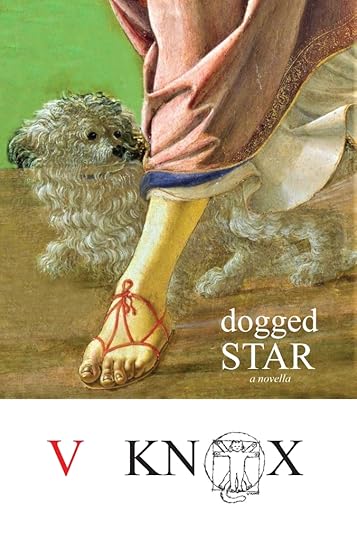 ‘DOGGED STAR’ – When the teenage Leonardo Da Vinci experiences a spontaneous emotional outburst while painting his first masterpiece, he unwittingly initiates a long-term long-distance love affair that defies physics. An extraordinary romance spanning five-centuries transpires inspired by the dogged nature of canine loyalty, the fine art of unwavering reincarnation, and blind faith written beyond the stars.
‘DOGGED STAR’ – When the teenage Leonardo Da Vinci experiences a spontaneous emotional outburst while painting his first masterpiece, he unwittingly initiates a long-term long-distance love affair that defies physics. An extraordinary romance spanning five-centuries transpires inspired by the dogged nature of canine loyalty, the fine art of unwavering reincarnation, and blind faith written beyond the stars.Most titles of my books contain wordplay clues. For example, my middle-grade time-slip adventure ‘TWINTER’ melds the main characters: a pair of twins and a winter curse; similarly, ‘WOO WOO – the posthumous love story of Miss Emily Carr’ is ‘highly paranormal woo woo’ as well as the name of the artist Emily Carr’s pet monkey, Woo – the true hero of the story.
Significantly, when anagrammed, ‘ART’ reveals the word ‘RAT’. But to appreciate the deepest supernatural magic of ‘DOGGED STAR’, an ‘S’ must be added to form ‘RATS’ and then read backwards as ‘STAR’.
Fine ART, an infestation of RATS, and a misunderstood STAR triangulate in a novella inspired by, of all things: a teenage wunderkind, the steadfast spirit of an invisible dog, and an ominous constellation having a bad day.
In 1470, eighteen-year-old Leonardo da Vinci, an apprentice in Master Andrea del Verrocchio’s studio, paints a high-spirited dog and a wily fish for an altarpiece while riding a wave of unprecedented creative energy. His corresponding animating lifeforce results in a spontaneous unconstrained time rift that transports the apparition of a teenage girl – an art student sketching the altarpiece 500 years in the future in London’s National Gallery.
But after the smitten teens continue to meet in a stream of lucid dreams across time, innocent puppy love evolves into a into an ill-fated love triangle with lasting repercussions of star-crossed reincarnation and an unwavering romance that spans five-centuries.
EXCERPT FROM PAGE ONE:‘DOGGED STAR’ print and Kindle versions are AVAILABLE HERE: https://www.amazon.com/Dogged-Star-V-Knox-ebook/dp/B0B1TG33FT
[Once upon an ominous star, a dog was born. By my reckoning we were hapless twins born 500 years apart. I presume such a wild notion because the universe creates wondrous paradoxes in plain sight, which is why a tail can wag a dog, a human can dream a lifetime in the space of a cat nap, and unexplained phenomenon can doggedly serve humans in unimaginably perverse ways.
Case in point. My eyes have six months to live. Tragic for a photographer, ruination for a painter of fine miniatures, and damnably inconvenient for an art historian editing their first book.
Unfortunately, the only upshot of perpetual head-on collisions with disaster is that serious challenges come as no surprise. I’d been expecting a long overdue catastrophe for thirty-three years — ever since I turned nineteen.]
June 6, 2022
READ BEDE! … IF…
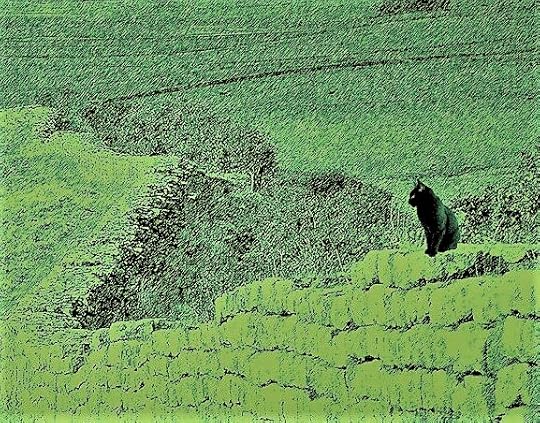 Anubis on Hadrian’s Wall
Anubis on Hadrian’s WallIF the title ‘PERPETUAL CHILD’ resonates to a natural affinity for magical realism within you.
It helps to be middle aged to read the Bede Series in the true spirit it was written… namely in the guise of a middle-grade time-slip adventure to please an author (me) refusing to age. I write mystical fiction for adults because I believe that too much maturity can be dangerous to your spiritual health. And so, I invite you into my playground.
Peter Pan, the boy who refused to grow up, said it best when he pleaded with pantomime audiences to save Tinkerbell. “CLAP IF YOU BELIEVE IN FAIRIES!” he commanded. And without hesitation, every parent in the theater put their hands together, raising the roof with cheers and stomping feet. Not just to encourage their offspring but to enthusiastically honor the times when storybook fantasies were essential realities in their whimsical education.
May I tempt you with a prologue written seven years after book one of the Bede series, ‘TWINTER – the first portal’, was first published. It was belatedly dictated to me a month ago in the only way writing matters – a 20-minute stream of consciousness by the word sprites who play behind my eyes because sometimes I am sabotaged by responsibilities from my own never-ending list of false ‘do or die priorities’ and forget to listen to my imagination.
The distance from Bede to London is 300 miles north as the crow flies and 30,000 miles as time flies.
THE PROLOGUE
It was a dark and stormy night
Two cats began to fight
There were two little ghosts
Eating bread and toast
Perched on Hadrian’s Wall
That defended Bede Hall.
“It’s time,” one of them said
With a feeling of dread
It’s far too soon,” said the other
“And a great deal of bother!”
Sarah Goodman’s kitchen in the village of Bede radiated with spectral light that emanated from a small square hole in the back door – a rotating cat flap called ‘The Royal Opening of the Way’ that permitted entry for time traveling cats from the temple of Bast in ancient Egypt whenever summoned by Bede Hall.
After eons, a mystical feline colony continued to guard the passages linking ages past and future that reside in nine portals of power within the stately Hall and the surrounding landscape.
The flap glowed green and began to rock gently in time to the clock on the wall ticking the last few seconds to midnight. It swung more urgently until it froze, fully open, wide enough to welcome Anubis – a noble Abyssinian wearing a single hoop earring and a wide collarette of gold that cast elongated sparks up the walls as his sleek shadow progressed.
Anubis, fearlessly pushed in, and padded silently over the checkerboard tiles towards the front door. At precisely 12:01, he spun gracefully, thinned into a long green string, and slipped through the keyhole into a downpour of English rain.
Outside, he resumed his feline shape and sniffed the air for demons. Satisfied he was alone, Anubis shook raindrops from his fur and waited until ‘The Royal Way’ re-materialized as a luminescent green carpet shimmering with power that levitated an inch above the cobbled street. He pawed it cautiously before streaking down the country lane towards a treeline of oak and willow startling a lean fox emerging from a skeletal hedgerow.
The fox stared after the disappearing vision and sniffed the distinctive splayed paw prints of a cat with extra toes. “Goodness,” it said out loud. “This can’t be true. It’s a thousand moons too soon!”
Inside the forest, a green mist replaced the carpet, hovering eerily like low-lying swamp gas. As Anubis waded through it the trees took a step back and the population of woodland creatures pressed forward. Rabbits and mice; badgers and fox, lined the path, respectfully averting their eyes.
Anubis howled a formal greeting that set up a general bustling of fur and claws on the forest floor. Birdsong and chattering squirrels chirped from the tree canopy, and the tree sprites, never at ease with the feline species, slithered out of sight on the highest boughs.
It was nine minutes past midnight when Anubis emerged from the trees before a Roman wall curled protectively around Bede Hall like a dragon’s tail. He landed, light as a phantom, and padded a crumbling span of the 73-mile-long Hadrian’s Wall holding his tail high like an antenna.
Lightning bolts seared the sky in pulsating searchlights. Anubis reached the second time portal as a resounding thunderbolt dislodged an ancient stone and set it rolling towards the Hall’s gates carved with magic symbols.
Inside the gates, a herd of green animals made of leaves, gamboled in their midnight hour of freedom. They halted abruptly as Anubis slipped through the bars. The largest topiary, a sphinx named Sage, bowed its head. The others froze into their daytime positions and waited for their leader’s orders. The smallest, a young hare named Harigold, hopped up and down too excited to remain still.
Anubis returned Sage’s bow. His brief message containing the words mercurial, fickle, and diabolical triggered a renewed display of lightning spikes that singed the treetops. “Make the most of your freedom,” he said. “We’re nearly out of time. Pass the word.”
Sage mumbled to himself so Harigold wouldn’t hear. “But surely, that’s impossible.”
Anubis positioned his back against the moon and stared through the bars at a small window under the eaves waiting for the Hall’s all-clear signal of nine flashing lights before heading to his English wife, Feathers, waiting in the dining room window of the great house.
There was no time for an affectionate hello. Feathers gave her report. “It’s as we feared,” she hissed. “The weather has been fearful of late. Frightful extremes of hot and cold wildly out of season plague the land whenever the matriarch is dreaming. Your dire predictions bring a whole new meaning to the term ‘changeable as the weather. Word has it the tree sprites are tunneling underground, the bees are in a right old tizz, and Miss Findhorn’s lavender crop is up in arms. The land is wasting away. For the moment, the Hall is holding off the developers. But with the Green Man in hiding and the matriarch in a dithery state, its only a matter of time before it’s sold and falls into ruin. Or worse.”
“This is only the beginning, my dear,” Anubis replied. “The Furies are restless. And by that. I mean more restless than usual. Young Miss Beryl that was, will have to bring her grandchildren up to speed smartish and no mistake.”
“They arrive next week,” Feathers grumbled, “if the old lady keeps her promise and stays awake. She can be rather unpredictable. Bede Hall is not best pleased with her. Even Parks is fit to be tied.”
Anubis’s fur bristled like a hedgehog. “Her Majesty, Bast, has ordered me to return with the Stratford-Smyth family and take up permanent residence. You’ll have to help me.”
A little ghost waving frantically from behind the dining room mirror caught Anubis’s eye and set the two cats caterwauling fit to wake the dead.
“The prophecy is upon us,” Anubis said and beetled off to the Hadrian portal.
“Goodbye, dearest,” Feathers said to the empty spot Anubis deserted. “I shall alert Parks.”
Anubis closed his eyes and concentrated on the temple of Bast. He raised his head to the full moon, yowled once, shivered his tail wildly, and leaped from Hadrian’s Wall directly into the keyhole of Sarah Goodman’s front door.
The kitchen clock had ceased its ticking, frozen at nine minutes past midnight; the black and white floor tiles were already covered in a drift of golden sand, and the electrics sputtered like candles.
Anubis lifted his head to the familiar scent of lotus incense wafting from the time portal. A warm Egyptian breeze set the flap swinging in slow motion like a beckoning finger, gently teasing him to come home. Anubis plunged into the Royal Way. The sand swirled into a howling vortex and followed him. The flap juddered to a stop.
Old Miss Sarah’s alarm clock jolted her from a deep sleep. The ears of her house cats at the foot of the bed twitched madly, threatening to wake them, but the ghost of a young man watching over Sarah’s dreams, lulled them back to sleep.
“Ben is that you?” Sarah whispered into the dark.
“I’m still here,” the ghost replied, gently. “All is well. Go back to sleep, my love.”
Nine important events occurred simultaneously. The hands of Sarah Goodman’s kitchen clock spun forward to nine o’clock, chimed nine times, the last tile shone gold for nine seconds before blacking out, the house cats resumed their purring, the trees stepped forward to resume their old positions, the woodland creatures scuttled off to bed, birdsong commenced, Ben drifted away, and timeworn Bede Hall mulled over a new strategy to defend itself with its venerable gardener, Stanley Parks.
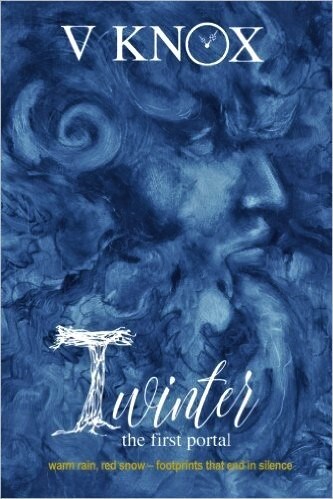 https://www.amazon.com/TWINTER-first-portal-footprints-silence/dp/0993738044/
https://www.amazon.com/TWINTER-first-portal-footprints-silence/dp/0993738044/
January 5, 2022
GOLDILOCKS UNPLUGGED


 BEST WISHES FOR A HAPPY NEW SECOND CHILDHOOD
BEST WISHES FOR A HAPPY NEW SECOND CHILDHOODWhen it came to porridge, chairs and beds, Goldilocks was one picky little kid. But somewhere in the middle of too small, too big, too soft, too hard, too cold, and too hot, was just right. Similarly, somewhere in the genre of books for ‘middle-grade’ readers (aged 9 to 12) are stories ‘just right’ for adults in need of a simpler world.
Children’s books are not just for children anymore. But were they ever? For one thing, they’re written by adults for children and therefore must surely encompass the author’s experiences of being a child. What captivated them? Possibly an older generation of children’s books: ie Peter Pan, Alice in wonderland, Narnia, Little house on the Prairie, Anne of Green Gables, Treasure Island, and Mary Poppins.
I write for the ‘muddle-grade’ – an expanding readership of adults in search of a simpler time – namely their carefree childhood days, real or imagined. My middle-grade Bede series is ‘just right’ for any reader over nine. In many ways, it was written more specifically for the middle-aged reader in search of better times: world weary, downtrodden, jaded, underpaid, overworked, down to earth, dedicated parents and grandparents, spinsters and earthmothers, escapists all from haunting mid-life crises who need a break and a push to let go and be a kid.
Being nine years old for a stolen hour is an affordable luxury. A bubble bath for the mind. And more importantly, an essential time out from the rat race and apron strings. Second childhoods beckon for a reason. You need to play. A time travel adventure is a ticket to your past. And what better time to appreciate the joys of make-believe than from the perspective of middle-age.
Goldilocks took the ‘middle road’ (definition: ‘a course’ of actions midway between extremes’).
I recommend a bolder mortgage-free path of time travel, revisiting your past while living in the moment. An extremely vital trip dabbling in the forgotten arts of happy go lucky.
And so, I invite you to meet me in the middle by stepping over a liminal threshold marked by the Roman Emperor Hadrian’s great Wall in England, into the timeless landscape of fictional Bede, built atop the ruins of prehistoric Britain. Bede Hall is an abandoned stately home – a combination of Hogwarts Castle and Downton Abbey, a magical building with a mind of its own where its long-standing aristocratic family navigate a world of ghosts and time portals ruled by Royal Abyssinian cats from ancient Egypt alongside a host of reincarnated geniuses recalled from the past to fight an ancient war over a prime piece of real estate from the continent of Pangea.
Lewis Carroll’s ‘Alice in Wonderland’, Edward Lear’s ‘The Owl and the Pussycat’, A.A. Milne’s ‘Winnie the Pooh’, C.S. Lewis’s ‘Narnia’, Robert Louis Stevenson’s ‘Treasure Island’, Phillipa Pearce’s ‘Tom’s Midnight Garden’, and every Christmas movie adapted from print is nostalgia on tap for grownups feasting on memories of Christmases past every December without fail. Some things never get old. The best stories entertain the world. Harry Potter anyone?
PARANORMAL DISCLAIMERIt occurs to me that our worst and best moments embed themselves in our minds like snapshots in a photo album. Every now and then they flash from muscle memory. Images that have a particular impact, like it or not, continue to haunt or inspire us for ill or for gain. And like all true pictures, they’re worth a thousand words. So, a picture can, in effect, be a ghost who walks through a room and leaves an impression when you least expect it.
The ghosts in my stories are generally metaphors for human mistakes. What if a ghost was a confused person who never died? Say, someone traumatized who has retreated into psychological hiding a.k.a. ‘flight’ mode to feel safe. In other words, the paradox of a ‘living’ ghost with survival instincts.
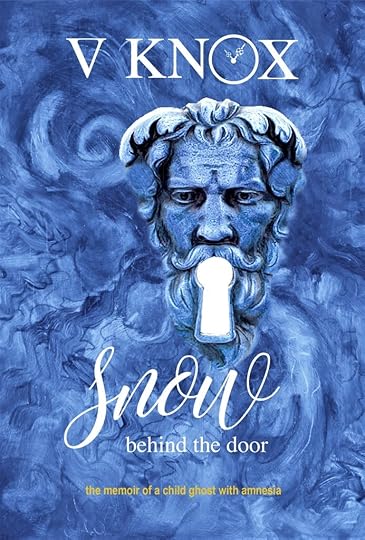
In ‘SNOW BEHIND THE DOOR’, book four, the ‘stand-alone-prequel-sequel-summary’ of my Bede Series, Snow, a nine-year old girl, is the lingering trace of a traumatized life-force with an unfinished tale she must remember. In physical terms, Snow is blocking guilt and shame with self-induced amnesia. She copes by believing she is invisible. Wow! Sound familiar anyone?
IN SNOW’S WORDS:[A million years after I broke the world, I said I was sorry. But until I truly mean it, my truth is frozen in time. My companions are a rabbit doll, a keyhole named Jack, and a disgruntled stately home. And so, I remain, age nine, adrift in the ‘House of Reincarnations’ where the scent of lavender once started an endlessly cold war. – Snow]
BACK BLURB from ‘SNOW BEHIND THE DOOR’After being reunited with her family, Snow, the ‘child ghost of Bede Hall’, retreats into her subconscious to escape the terrifying possibility of haunting Bede Hall forever. In order to save herself, Snow must battle her way through memory loss, dream her way through time to reclaim her lost memories, make peace with a past life, and discover if reincarnation is a viable alternative to a fate worse than death.
And so, until we meet next on the playground of cozy art history mysteries or in Bede, I wish you happy time traveling to a simpler world you so rightly deserve.I have to say, where I live, on Vancouver Island, the temperature of porridge is the last thing on your mind if you meet a mama bear with baby bear in the woods. Papa bears may be mildly alarming but it’s mama one has to watch out for
‘SNOW BEHIND THE DOOR’ https://www.amazon.com/dp/B095V6D5VF
November 24, 2021
NOW YOU ARE TWELVE!
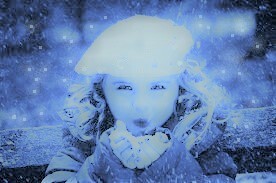
Tis the season for wintry tales of snow and wishing on Christmas stars.
In 1924, A.A. Milne (author of the ‘Winnie the Pooh’ books) wrote ‘When We Were Very Young’ for his four-year-old son, Christopher Robin. In 1927 he wrote ‘Now We Are Six’.
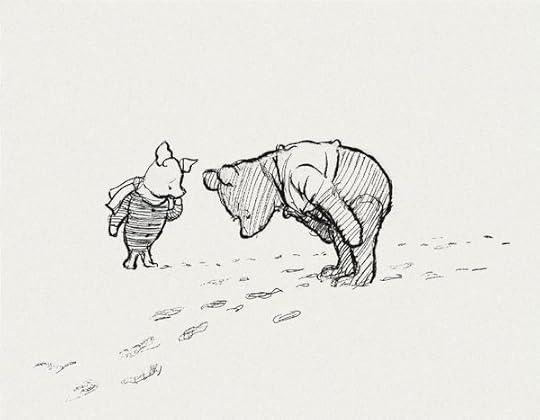 Piglet and Pooh discover worrisome heffalump footprints in the snow
Piglet and Pooh discover worrisome heffalump footprints in the snowIt’s a little presumptuous and far too ‘on the nose’ to dedicate my ‘Bede Series’ to readers who may self-identify as being ‘When We Are Too Old to Enjoy Childish Stories’. Some adults, myself included, enjoy a welcome diversion reading a story from the ‘middle-grade genre’ (traditionally recommended from age eleven to thirteen). It’s more than escapism. It’s reconnecting to a vital part of your psyche. And at the risk of sounding flippant or cliché, your inner child needs to play.
I needed to play, and so, I wrote a magical realism time-slip adventure to rekindle my imagination inspired by a character – the ghost of a little girl named Snow who frequently visited my musings. But I especially wrote it for the twelve-year-old, me, who quite frankly, was worn out from being a responsible adult for too long. I had no idea Snow’s story would take several years to complete and fill four books.
VENTURE INTO BEDE AND WELCOMEAnd so, while we are still young, I invite you to enter Bede the way I did, as a twelve-year-old!
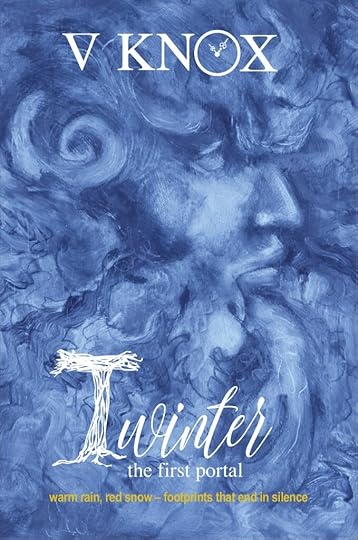
No worries, by chapter three, you will turn thirteen.
After their father goes missing, Kit and Bash Stratford-Smyth move into Bede Hall, their grandmother’s rambling stately home, with their mother, an older bully of a brother, a wolfhound named Jack, a cat named Feathers, and an eccentric parrot named Pigeon. As telepathic twins – Kit, hooked on science and his sister Bash, besotted by magic, share lucid dreams and an extraordinary destiny, but disagree on almost everything about Bede.
As a member of a distinguished old family, the twins visited Bede Hall on every school break and holiday. They’ve explored secret passages, avoided time portals they didn’t know were there, and searched in vain for an evasive child ghost throughout a great deal of invisible supernatural goings on. What they never knew, was that the Hall was alive… and all was not well. But now that they’re twelve all that is about to change. Turning thirteen isn’t going to be easy.
INTRODUCING MISS BERYLBeryl Stratford-Smyth, the feisty matriarch of Bede Hall, had been a precocious child, not to be trifled with. Her twin brother, Ben, attended formal school, but being a girl, Beryl had been taught her manners and lessons by a succession of starched drudges called nannies and governesses who were afraid of everything, including ghosts, who left service on a regular basis soon after experiencing an eery chill in the attic’s cold spot where Miss Beryl talked to a girl they couldn’t see.
When Miss Beryl became a grandmother, she insisted her family addressed her as Lady Nan to avoid being called granny or gran by her grandchildren which she deemed undignified (or nanny, which felt frightfully goatish), or even Nana because it reminded her too much of the dog in Peter Pan. It was advisable to avoid even obscure references to the nature god, Pan for good reason.
The landscape, once ruled by Pan and his pantheon of elemental gods was in a state of neglect. Birds ceased to sing, and the royal bees of Bede stopped making lavender honey. Powerful immortals were forced to run to ground, withdrawing their protection from the Hall’s extensive grounds and boundaries, a Saxon round tower, a seventeenth-century maze, an extraordinary sundial, and a haunted cold spot in the attic known as the Winter Room. For millions of years, they had controlled the seasons but now the weather ran hot and cold out of order. It upset growing things and the woodland creatures scurrying in circles.
Pan was not a name to toss carelessly in the face of displaced fairies, depressed tree nymphs, or the animated topiaries that still wandered the Hall’s grounds at night. Fairies were known to be haughty, tree nymphs were temperamental at the best of times, and eavesdropping plants were not to be trusted with getting their facts straight. That said, the lavender crop had a lot to answer for.
When Lady Nan retreated into a reverie of past-life memories in a nursing home, the Hall, abandoned in disrepair, was in danger of being absorbed into the landscape by greedy developers. They gathered like vultures, arguing how best to profit from the decline and fall of a grand dynasty and a local landmark. But I’ve gone ahead of my story. First let me introduce you to Bede Hall, Hadrian’s Wall, and the Holy Isle of Lindisfarne.
 THE HISTORY OF BEDE
THE HISTORY OF BEDEBefore history began… before Bede Hall inhaled its first thought as a stone pyramid, it was a primordial hill emerging from a timeless sea – a mound of muddy memories that sheltered the seeds of a dying antediluvian civilization where humanity could sprout anew.
By 2018, it lay crumbling and disgruntled, in a pocket of protected liminal space in the north of England, built atop the ruins of prehistoric Britannia. The Roman Emperor Hadrian’s, meandering defence wall, begun in 122 A.D. had its back and an immortal colony of ancient Egyptian cats controlled the rambling warren of time portals embedded in its foundations. Lindisfarne, the small island off the east coast in the North Sea that once emitted powerful waves of energy to quicken the standing stones of Brodgar, now pulsed feebly, weakening the spiritual heart of Great Britain.
 Anubis, the Hall’s feline custodian, perched on Hadrian’s Wall, maintains watch on high alert for signs of a long overdue ancient curse.
Anubis, the Hall’s feline custodian, perched on Hadrian’s Wall, maintains watch on high alert for signs of a long overdue ancient curse.And so it was, that in a distant suburb of London, on an ordinary school day for Lady Nan’s grandchildren, the telephone shrilled with a chilling reverberating sound that turned the world completely doolally. Lives were at stake. The Hall’s legacy was at stake, and not least, its dignity, in a landscape that was positively ancestral.
When her grandchildren were small, Lady Nan charmed them with stories about her magic snow globe and hourglass, and tales of her best friend, Snow, a nine-year-old ghost who had misplaced her father. But Bede time is tricky. It insists on circling back to what was and should never have been, and all the while, erratic events swirled ferociously in Lady Nan’s snow globe.
There were days Lady Nan’s hourglass was encrusted with frost too hot to touch.
Lady Nan had been determined to dream her life away but was forced to rally from her self-imposed retirement by Snow. Double duty called. The Hall and her family were in trouble. Her son-in-law was missing from his dig in Egypt and her daughter was unable to cope.
The Hall’s priority was to convince its recalled matriarch to prepare her twin grandchildren for a time sensitive mission and save it from being sold. Its follow-up missions were, simply stated, overwhelmingly cosmic: to fulfill an ancient prophecy, rescue its resident child ghost, and save the planet. Privilege doesn’t get more dangerous than balancing precariously at the far most edge of an ancient curse. And so, Lady Nan recruited her enchanted childhood toys to unlock the past. She mobilized the twins at odds over logic and metaphysics, a group of twice-born villagers, the Great Sphinx of Egypt, and a royal line of sentient cats. But as Kit and Bash fought increasing feelings of sibling rivalry, supernatural events caused them to be separated by 5,000 miles, valiantly listening for each other through 5,000 years of static.
IF TIME STANDS STILL ANYWHERE, IT’S IN BEDE; IF GHOSTS HAUNT ANYWHERE, IT’S IN BEDE HALL!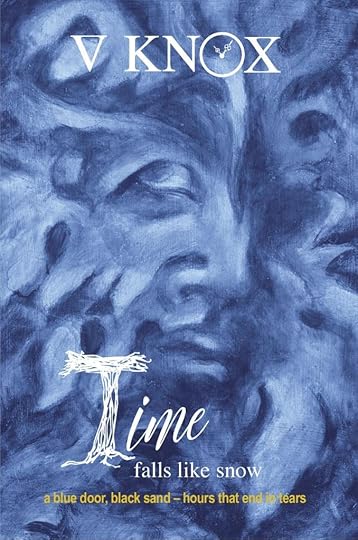
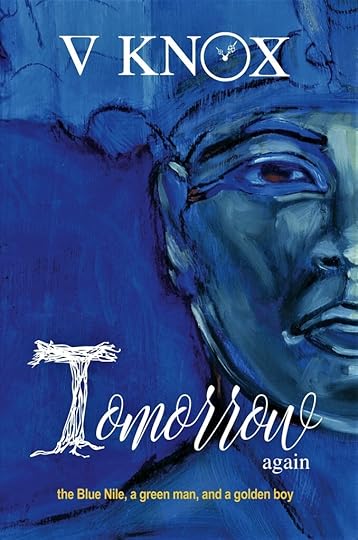
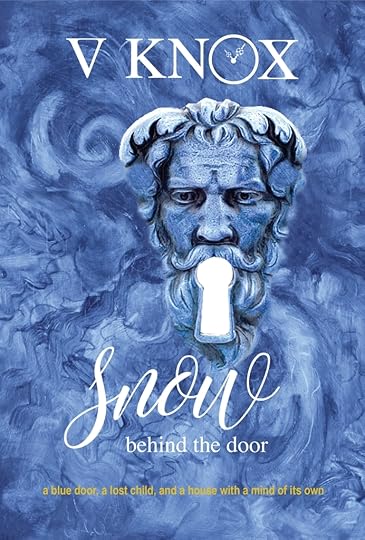 books 2, 3, and four of four in the Bede Series
books 2, 3, and four of four in the Bede SeriesRemember… when you experience Bede, YOU ARE ALWAYS TWELVE or thirteen or sixteen or impossibly old.
I leave you with a poem by A.A. Milne written for ‘Now We Are Six’
When I was One,
I had just begun.
When I was Two,
I was nearly new.
When I was Three
I was hardly me.
When I was Four,
I was not much more.
When I was Five, I was just alive.
But now I am Six, I’m as clever as clever,
So, I think I’ll be six for ever and ever.”
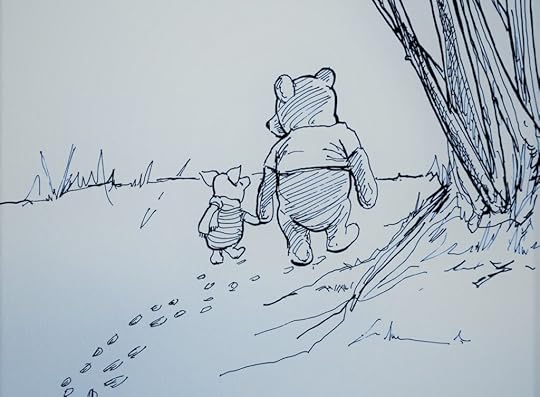 friends always face heffalumps togetherI felt inspired to add my own stanza to A.A. Milne’s verse:
friends always face heffalumps togetherI felt inspired to add my own stanza to A.A. Milne’s verse:Christmas is the perfect time to be a child. I hope the twelve-year-old-you will be as thrilled to time travel to Ancient Egypt as I was.
But now that I’m older
And become so much bolder,
I’m beginning to delve
Into stories that thrill me
As if I were twelve.
Thank you for playing make-believe across the miles, from my imagination to yours.
– Veronica
October 26, 2021
JUPITER & THE GHOST OF MONA LISA
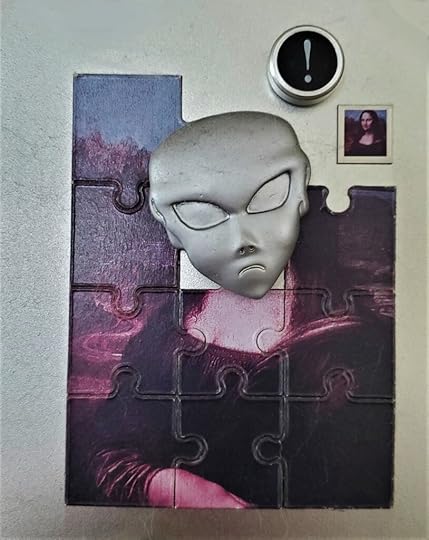 MONA LISA HAS A WINDOW OF OPPORTUNITY AND SHE’S NOT AFRAID TO USE IT!
MONA LISA HAS A WINDOW OF OPPORTUNITY AND SHE’S NOT AFRAID TO USE IT!Is the ‘Mona Lisa’ beguiling or smiling, alluring or obscuring, devious or mischievous? In my fictional account of her life in ‘The LISABETTA TRILOGY’, she is most decidedly, all six.
BUT JUST BETWEEN THE TWO OF US:THE ‘MONA LISA’ IS NOT POSSESSED… SHE’S ARTFUL!There are always a few characters inside my head vying for attention, dying to tell their stories. Lisabetta Buti, Leonardo da Vinci’s (half ?) kid sister, was such a character. She was relentless. And since only the most persistent stories make it to paper, I wrote about the mysterious identity of the ‘Mona Lisa’.
My imagination played out the tale of a desperate spirit with unfinished business, trapped in her famous portrait, who confronts the living in order to be known for all that she was born to be after a misshapen letter ‘a’ unseated her from Gioconda to Giocondo. Go figure. Typos happened even in the fifteenth century!
LEONARDO TAUGHT HIS KID SISTER TO PAINT… SHE TAUGHT HIM HOW TO SURVIVE!A story idea descends like an entity, fills a writing room with creative ectoplasm, and relentlessly stalks an author, day and night, as a restless spirit. There is no peace until a muse’s phantom thoughts are on paper, and so, this tagline presented itself in letters the size of the Hollywood sign:
The fanciful biography of Lisabetta’s hidden, forgotten, and overlooked life unfolds when the embittered spirit of Leonardo da Vinci’s kid sister steps outside her portrait to redress a five-hundred-year-old case of mistaken identity. And it soon becomes apparent, that although the ‘Mona Lisa’ may be priceless, she must now become a woman worth saving!
Ghosts make amazing narrators. The ‘Lisabetta Trilogy’, is narrated by the ghost of Mona Lisa; Veronica Lyons a troubled single parent raising an autistic child in 2008; and an omnipotent ‘fly-on-the-wall omnipotent historian time traveler’, travelling incognito.
And so, Jupiter Lyons, an autistic boy meets, befriends, and rescues Mona Lisa’s spirit trapped in her portrait when he visits the Louvre with his troubled mother. Together, this genius child with a heart the size of a planet and a distraught woman trapped in a 500-year-old portrait set out to save each other from obscurity only to discover Jupiter’s fraught mother needs saving first!
1. ‘LISABETTA – a stolen glance’ https://www.amazon.com/dp/B07K6SBB78
2. ‘LISABETTA – a stolen smile’ https://www.amazon.com/dp/1775047113
3. ‘LISABETTA – a stolen sister’ https://www.amazon.com/dp/1775047121
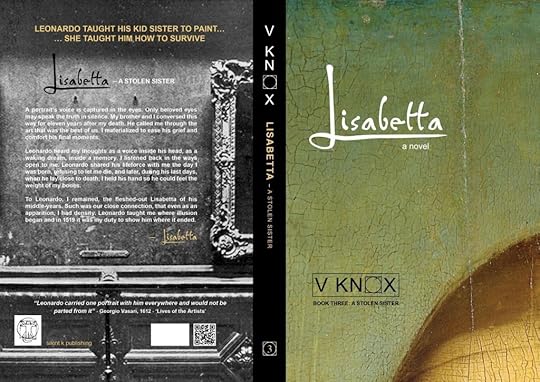
My stories explore the lighter side of alternative physics: where museums archive the essences of past lives, sentient buildings host generations of ghosts and elementals, and mystical places provide safe harbor to lost souls determined to find each other across time, resolve their unfinished business, and make their way home.
I write about haunted paintings, undying love, ghostly lovers, creative autism, buildings with minds of their own, time travel, themes of reincarnation and ancient mythology, cozy time-slipping events, mystical settings, historical romances of love undiminished by death or time, and art history mysteries where painted portraits refuse to stay on the canvas.
THE ‘LISABETTA TRILOGY’ PREMISE… THE BIG PICTURELeonardo da Vinci is a visual telepath – a psychic painter, well-acquainted with the ‘mediums’ of paint and charcoal. He is a super watcher, possessed of such amplified seeing he may be considered a master seer capable of capturing every nuance of a subject’s likeness: trembling lips a museum visitor swears they witnessed, or the wink of an eye, or a smile that shifted from joy to pain from the gallery walls.
Troubled in life equates to restless and determined in the afterlife. Mona Lisa is impatient to be found… literally ‘found out’ because what was once a welcome refuge and a safe haven, has become an unbearable humiliating confinement, inhabited by her soul pleading to be liberated.
AN AUTHOR POSSESSEDIn my ghost-inspired stories, disembodied voices whisper in the living’s ears, the swishing of robes brush their shoulders, hints of exotic perfume breeze by, and then, along comes an unsuspecting storyteller who agrees to help them out – a.k.a. me!
The loaded words ‘possession’ and ‘haunting’ are creepy key words that distinguish the classic ‘ghost story’, but that said, and in as much as unhappy spirits are involved, I write cozy.
Surprisingly, there are ways to free a spirit who helps you back. Author and protagonist make supernatural pacts written in stone: “You write me out of here,” Lisabetta says, “and I will tell you a secret I’ve been too ashamed to admit, a hiding place of a lost work, or a document you can take to the bank. Take your pick.” I did the math: possession of a secret is nine-tenths of a mystery, a ghost remains nine-tenths alive, and the sitter trapped in a portrait is nine-tenths free. “So, do we have a deal?”
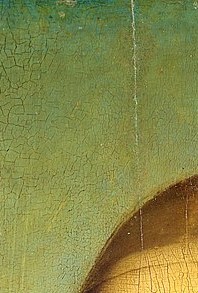 excerpt from the prologue of book 3 of 3 ‘LISABETTA – a stolen sister’
excerpt from the prologue of book 3 of 3 ‘LISABETTA – a stolen sister’MONA LISA HAS A WINDOW OF OPPORTUNITY AND SHE’S NOT AFRAID TO USE IT!
[ Jupiter found me in the ‘living’ room – an unlikely place for a ghost to hang out. He always says goodnight after his bath.
He approached me silently, padding towards me barefoot, ready for bed, an angel slightly pink about the ears smelling of soap, his hair still damp… hugging a large book.
The expression on his sweet face was determined. He sat beside me and leaned his forehead on my arm. “This is you,” he whispered huskily and thrust the book in my lap. “Page 222, please.”
Page 222 showed my portrait as no person could ever imagine it, expanded many times larger than life revealing layers of infinitesimal detail.
I had aged 500 years. My face was ravaged beyond repair, as weathered as peeling paint on an old door which was ironic because I referred to my painting as a window.
I was at once, a microcosm and a macrocosm.
The poplar panel on which I was painted showed a hairline crack, split diagonally from left to right that stabbed my forehead.
Jupiter’s eyes were agog with awe. He touched the lightning bolt zapping my forehead and referenced Harry Potter’s scar. “Are you a wizard?” he asked.
I glared back affronted. “If I was, would I BE here?”
“Maybe someone put a spell on you.”
I chuckled. “Maybe someone put a spell on LEONARDO.”
Jupiter’s face registered a new concern. “Maybe someone put a spell on ME!”
From the binding, it was clearly a stolen library book – one of his mother’s art history textbooks: ‘The Mona Lisa – a retrospective’.
I assumed he wanted his usual bedtime story, but I couldn’t have been more wrong. Jupiter came bearing a gift – a deep knowing, what he couldn’t possibly know after mulling over a collection of random snippets of data he called ‘secrets with wings.’
I know now that Jupiter intended to save me from myself. He had gleaned a solution. – Lisabetta ]
The ‘LISABETTA trilogy’ will be available as a Kindle e-book by October 30
https://www.amazon.com/dp/1775047121
October 18, 2021
THREE TIMES A LADY
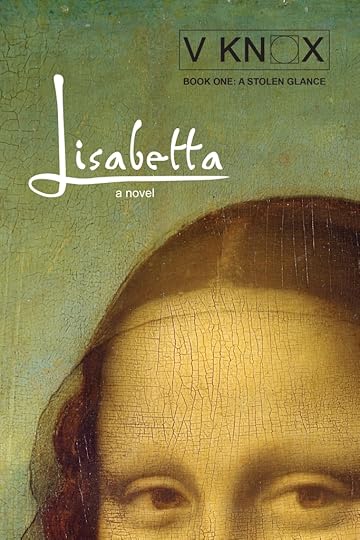
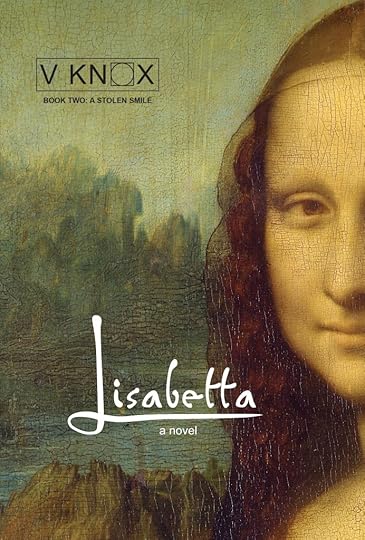
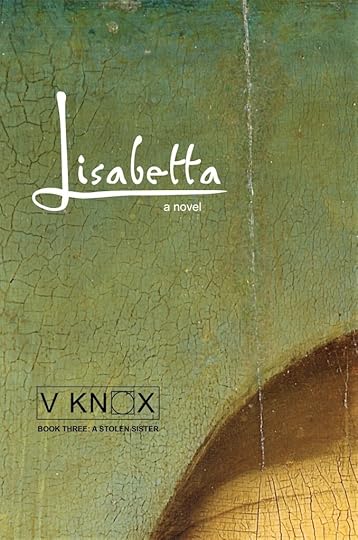 With the completion of ‘LISABETTA – a stolen sister’, ‘the LISABETTA trilogy’ is now part of my literary history. The fanciful biography of Lisabetta’s hidden, forgotten, and overlooked life unfolds when the embittered spirit of Leonardo da Vinci’s kid sister steps outside her portrait to redress a five-hundred-year-old case of mistaken identity. And it soon becomes apparent that although the ‘Mona Lisa’ may be priceless… she must now become a woman worth saving!I WRITE BY THE SEAT OF MY PREMISES THAT NUMBER 3 X 3:
With the completion of ‘LISABETTA – a stolen sister’, ‘the LISABETTA trilogy’ is now part of my literary history. The fanciful biography of Lisabetta’s hidden, forgotten, and overlooked life unfolds when the embittered spirit of Leonardo da Vinci’s kid sister steps outside her portrait to redress a five-hundred-year-old case of mistaken identity. And it soon becomes apparent that although the ‘Mona Lisa’ may be priceless… she must now become a woman worth saving!I WRITE BY THE SEAT OF MY PREMISES THAT NUMBER 3 X 3:1. THAT: Leonardo taught his kid sister to paint…and she taught him how to survive!
2. THAT: Leonardo da Vinci was able to paint the soul of a sitter into a portrait.
3. THAT: The true identity of the ‘Mona Lisa’ was lost due to a sixteenth-century typo.
4. THAT: The ‘Mona Lisa’ was Leonardo’s baby sister, Lisabetta.
5. THAT: Lisabetta is still trapped in her portrait after 500 years.
6. THAT: There’s a secret hidden in plain sight that will release her.
7. THAT: Jupiter, an autistic six-year-old boy visiting the Louvre with his troubled mother,
Veronica Lyons, is Lisabetta’s knight in shining armor.
8. THAT: In order to shine in their own right, ‘The Mona Lisa’ and Jupiter join forces
to reclaim their true identities…. and…
9. THAT: Jupiter’s fraught mother needs saving first!
THE BEST THINGS IN LIFE ARE THREE!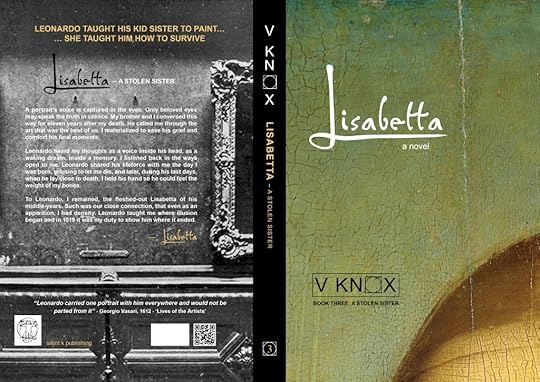 THREE BOOKS… THREE LINKS:
THREE BOOKS… THREE LINKS:1. ‘LISABETTA – a stolen glance’ https://www.amazon.com/dp/B07K6SBB78
2. ‘LISABETTA – a stolen smile’ https://www.amazon.com/dp/1775047113
3. ‘LISABETTA – a stolen sister’ https://www.amazon.com/dp/1775047121
THREE FACTS integral to all lost historical biographies:1. Somebody was born.
2. They did something special.
3. Paper burns!
THREE NARRATORS:1. Mona Lisa’s ghost – 1508
2. Veronica Lyons a troubled mother raising an autistic child – 2008
3. An omnipotent time traveler, traveling incognito
THREE CLUES HIDDEN IN PLAIN SIGHT:
“To Leonardo, I remained, the fleshed-out sister of his middle-years.
Such was our close connection, that even as an apparition, I had density.” – Lisabetta
1. A 1463 government census documents a five-year old daughter named Lisabetta was a
member of Leonardo’s mother’s household when Leonardo was eleven years old.
2. ‘Leonardo carried one portrait with him everywhere and would not be parted from it.’
– Georgio Vasari – ‘Lives of the Artists’, c.1612
3. “To Leonardo, I remained, the fleshed-out sister of his middle-years. Such was our close connection, that even as an apparition, I had density.” – Lisabetta
THREE CHARACTERS share the fanciful story of Lisabetta’s hidden, forgotten, overlooked life:1. THE GHOST OF LISABETTA – the woman made famous and rendered anonymous
in Leonardo da Vinci’s ‘MONA LISA’ masterpiece.
2. THE FRACTIOUS DIARIES OF VERONICA LYON’S – Lisabetta’s ‘landlady and
confidant’ when her young son, Jupiter, brings Lisabetta home from Paris in 2008.
3. A ‘FLY-ON-THE-WALL OMNIPOTENT HISTORIAN’ with skin in the Italian Renaissance Game, who shall remain unidentified until the last page.
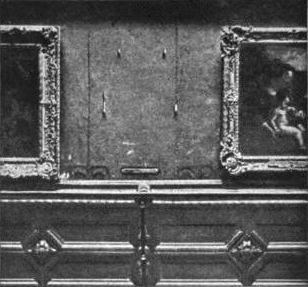
1911 – ‘THE MONA LISA’ was stolen
THREE PROLOGUES… THREE EXCERPTS:THE ‘MONA LISA’ MAY BE PRICELESS… NOW SHE MUST BECOME A WOMAN WORTH SAVING!
1. EXCERPT from the prologue of ‘LISABETTA – a stolen glance’
“In the spring of 1519, my brother Leonardo still believed he could fly. I, in turn, assumed my death in 1508 had been pure and uncomplicated, but then, my brother and I were always a pair of insatiable dreamers. We flouted the rules. We shared the same birthdate, April 15th. We were like twins born six-years-apart.”
2. EXCERPT from the prologue of ‘LISABETTA – a stolen smile’
“I am a long-lost memory. I am a mother, a sister, and an artist… I am a ghost. I am the Mona Lisa.
Veronica Lyons refers to my presence in her home as house arrest, an especially cynical observation considering she’s a dedicated recluse.
I call her my ‘little poet’ as a compliment as well as to mock her. She argues that although artists and writers are willing prisoners to solitude, she has risked her sanity by acknowledging my existence.
She accuses me of intruding on her privacy; I keep silent because I need her to continue invading mine.”
3. EXCERPT from the prologue of ‘LISABETTA – a stolen sister’
“Jupiter found me in the ‘living’ room – an unlikely place for a ghost to hang out. He always says goodnight after his bath.
Veronica’s son approached me silently, padding towards me barefoot, ready for bed, an angel slightly pink about the ears smelling of soap, his hair still damp… hugging a large book.
The expression on his sweet face was determined. He sat beside me and leaned his forehead on my arm. “This is you,” he whispered huskily and thrust the book in my lap. “Page 222, please.”
“In the spring of 1519, my brother Leonardo still believed he could fly.”
September 8, 2021
THE COLOR OF SANITY
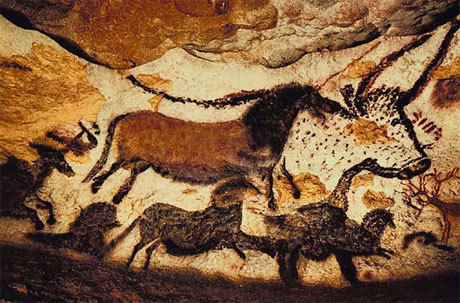 ‘THE INDIGO PEARL’
‘THE INDIGO PEARL’A snippet from ‘THE INDIGO PEARL’An autistic girl with extrasensory abilities who converses with paintings and birds, strives to find the family she senses in dreams and her true place in the world.
Veronica Knox
[ My old robin friend flew into the mouth of the cave, and I followed, through the hall of the birds and past the paintings of horses on the walls. I expected to hear the sound of stampeding mustangs, but no, I heard the gentle drip of water and the whinnying of a wild herd, lured into captivity from the primordial mist that greeted me on the other side. ]
AI = AUTISTIC INTELLIGENCE… ‘STATE OF THE ART’ TIME TRAVEL JUST BECAME TRANSCENDENTAL PROLOGUE
PROLOGUEWhen I was born my wings were too small to defend themselves… as if a white butterfly had alighted between my shoulder blades.
Within the hour, they withered and fell like rose petals. At least, that’s what I assumed. But I was mistaken. They were folded tightly into an invisible bud, dreaming. And sometimes, when tropical breezes stir the treetops or I track a flock of geese across the sky, my phantom wings quicken and purr. When I’m angry, they bristle and hiss. It’s as if I’m carrying a kitten on my back.
I belong to the air… all humans do.
We share a deep-seated fear of being caged. We are instinctive homing pigeons. Birds awaken deep ancestral memories of flight in us. They evoke the inherent joy of weightlessness and summon primal dreams of riding a perfect updraft in the clear blue. And even though you may have forgotten your natural habitat, you subconsciously display your inbred bird personas. I am a devoted human-watcher, and before you utter a single word, I see yours in plain sight.
A robin was my first friend. In my earliest years, I was treated like a dodo which led me to believe I was an ugly duckling. I was considered backward – an ‘indigo child’. But after I fell in love with a boy in a painting, my wings woke up and I became a swan.
August 30, 2021
BEYOND NORMAL

Pardon my blog, but I had word salad for breakfast.
And since this blog is also my personal soapbox, I get to rant and air my literary challenges. You, lovely readers get to unfollow or applause. Today, I vigorously wave a flag to protest the inadequacy of genres. Their limitations are landmines. Let’s jump right in.
We authors are compelled to wave a banner on behalf of our literary children that shouts HERE I AM! And so, we shop at ‘Genres R Us’ and buy into descriptions that fall far short of our storytelling intentions. Warning: beyond this point on the treasure map for gold there be rabbit holes.
But the publishing gatekeepers with all the power have decreed, not unreasonably, that promotion and marketing must begin somewhere. Which means we now require a stunning dress or suit for the prom (metaphor for book launch). Sadly, there is only one store in town, and all its gowns and suits are seconds, badly designed, out of fashion, or half-sizes that are way too small with a warning label: may contain explosive literary repercussions.
My muse shouted from above (in literary ‘para’-dice) “No author wants to attend their ‘prom’ wearing a rabbit hole… unless, of course, they’re Lewis Carroll!”
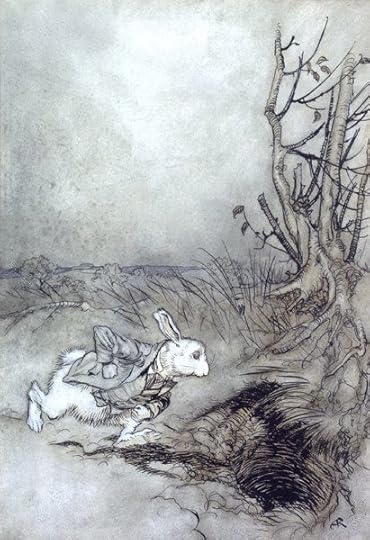
original illustration by Arthur Rackham from Lewis Carroll’s ‘
‘Alice in Wonderland’
I smiled indulgently, but I needed a cup of tea, so off I went to the kitchen where muses are apt to follow. My muse continued, a tad hysterically. “And, by the way,” it flapped. “No self-respecting book has to bomb! Respect being the operative word.”
THE ART OF RESHUFFLING GENRESBy my reasoning, the ‘outer limits of fiction’ refer to stories that inspire and entertain ‘above and beyond the call’. Which brings me to the ultimate confrontation with my muse. And so, I begged the question. Are my novels METAMYSTICAL, PARANATURAL, or SUPERPHYSICS? Because the words Metaphysical, Paranormal, and Supernatural have mostly defaulted to horror, erotic predatorial romance, dark magic, and dystopian fantasy, and none of these bears any resemblance to my books. My muse said any of the new genres I’d created were perfect! And then it chuckled with undisguised aMUSEment, and added: “GOOD LUCK!”
LET’S BACK UP FOR A MOMENT and DECODE THE INNOCENCE OF PREFIXESMy smarty pants muse then suggested, as an afterthought, that ‘SUPERCALIFRAGILISTICEXPIALIDOSIOUS’ would cover everything I’m reaching for, including the stars, but that it unfortunately, sent spellcheck into a tailspin.
META: denotes a change of position or transcending condition behind, after, or beyond.
PARA: denotes a position of above, higher, sacred.
SUPER: denotes a ‘wow’ factor, something ‘extra’ special, fabulous.
EXTRA: denotes more than, additional, multiple, extra sensory perceptions.
I write on the fanciful side of fiction where historical documents, objects in museums, and portraits, speak. Where the spirits in ‘ghost stories’ inspire readers to live, and sentient buildings protect their inhabitants. But fantasy is the special purview of swords and sorcery so, I must search further. All the way to the Italian Renaissance and back on the Titanic!
MY MUSE & I… IN CONVERSATION
“Why are you sighing?” a voice said in my head. This time it, as it happened, it was not regular monkey mind ego. My conscious muse was still hanging out.
“Because musing makes me sigh,” I said.
“I can relate.”
“Isn’t the world in enough crisis?” I mused.
“Absolutely,” my muse replied.
“The state of SUPERPHYSICS eludes me. Where’s the love? I mean, why, in the name of entertainment, does the common human collective gravitate towards ‘death wish, negative thrill seeking-type-paranormals’. Stories populated with psychopaths, sociopaths, crooked powermongers, boogeymen, zombies, vampires, and serial killers. Stories that evoke fear. Stories featuring baseless cruelty, greed, forensic science, events perpetuated by frightening people, nightmarish visions, disasters, insanity, demonic possession, horror and monsters, screaming and gore, the terrors of war, murder, violence, firearms, criminal behavior, dystopian worlds, seedy gratuitous erotica, and cheap thrills… all uncommonly negative and unproductive themes for a positive post-pandemic world. Phew! Saving the planet anyone?”
This is how the rest of our conversation went. It began with me airing a problem that’s been bothering me about the higher forms of responsible storytelling. “What are newsletters for?” I asked.
“You’re a writer but your newsletters are not just about promoting your books. It’s about sharing ideas, being brave enough to share. It’s about being honest.”
“And Venting?”
“Didn’t I just say that?”
“Maybe between the lines.”
“Well, I’m a muse. Welcome to my side of the literary stream. That’s where we do our best work.”
“I’m afraid my readers will leave the building. It’s not like it’s a full house to begin with.”
“That, my dear one, is what the unsubscribe button is for. Contrary to popular belief, publishing is not a competition. You know, you didn’t use to be such a chicken. Stop whining. And you didn’t ask me the real question you wanted to ask, so I’ll just skip to the answer.”
“Go for it.”
“Storytelling is for raising the consciousness of the world. It’s art!”
“Touché.”
“It’s a long process, and humans are in it for the long haul. Write your highest truth and move on… end of story!”
GOLD HAPPENSBooks don’t always need a genre. The words ‘time travel’ do all the heavy lifting in any title that contains them. Time travel is most definitely supernatural, paranormal, and well-outside the realm of physics. ‘The Time Traveler’s Wife’ is an exceptional story I highly recommend. ‘The Lovely Bones’ is similarly ‘lovely’ in spite of its (creatively understated) horrific elements: a predatorial child killer, rape, and murder. The spirit of a murdered girl is unable to reach heaven until she brings her killer to justice and helps to heal her grieving family. It stands alone, unlabelled, and ‘stands out’ by virtue of its main theme – the celebration of the human spirit. The light of this poignant ‘love story’ would have surely dimmed under the weight of such genres as ‘thriller’ ‘murder mystery’, ‘horror’ or ‘paranormal’.
My smarty pants muse, then suggested three collective nouns for genres: a ‘CONUNDRUM of genres’ for books that cover multiple themes. An ‘INCOMMUNICADO of genres’ for complex indescribable books. And a ‘RABBLE of genres’ for books with confusing titles, rambling blurbs, and unrelated cover art.
So, I proposed an EXTRA-special genre: ‘OUTER LIMITS’
which would specialize in tales of the extraordinary and extrasensory, time travel, parallel lives, reincarnation, alternate timelines and speculative histories, compassion, art, serendipity and synchronicity, the unexpected, the awe inspiring, the empowering, the fascinating, the surreal, the mystical, and true love that transcends death. Specifically, journeys into the hearts and minds of historical characters, long since passed, whose hopes and dreams survived to ‘live’ another day, and more often, another lifetime.
My muse mused for a second and cautioned me. “Underplay anything that could be misconstrued as ‘limits’ because to make an exceptional impression, a story must be free to rise ‘ABOVE’ the norm. The sheer numbers of books demand it so.”
Life gets “curiouser and curiouser” (as ‘Alice in Wonderland’ once mused). Humans begin their literary education through exposure to exceptional children’s books that adults often return to for comfort and insight. ‘Winnie the Pooh, anyone? Thank you, A.A. Milne and Lewis Carroll!
My muse and I are still collaborating on the fanciful NON-fantasy ‘Lisabetta trilogy’ (the Mona Lisa’s tormented state of mistaken identity, trapped in her portrait for 500 years). Our heart-to-heart concluded by reminiscing about our long in-depth sessions discussing Lisabetta’s childhood. “Remember the times we sat together in silence and wrote her worst fears?” my muse said.
I opened the manuscript to a random page and read aloud. “You mean like this?”
“Time plays tricks. If my name is irretrievably lost, posthumously cut apart from my time and permanently erased from the world, overshadowed by the lies of silence, could I ever be sure I lived, other than in Leonardo’s imagination?”
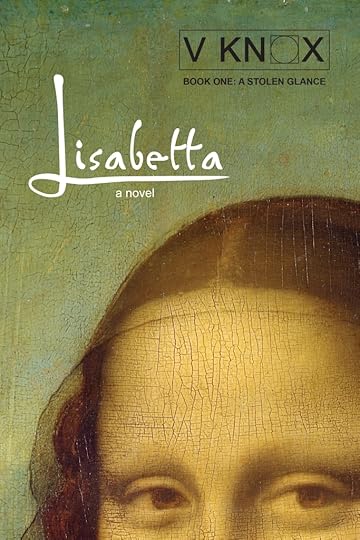
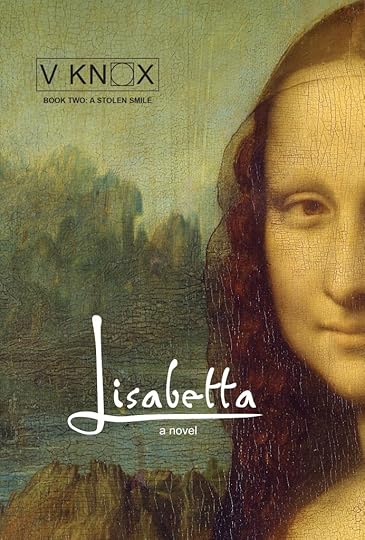 books one and two of the ‘LISABETTA TRILOGY’ by V Knox
books one and two of the ‘LISABETTA TRILOGY’ by V KnoxThe revised edition of ‘LISABETTA – a stolen glance’ will be available in September here: https://www.amazon.com/dp/B07K6SBB78
Book 2 of the Lisabetta trilogy, ‘LISABETTA – a stolen smile’ is in the final editing stages, so its publication may have to wait for the end of October… say, Halloween?
Perfect timing for a story that celebrates the ‘outer limits’. But that’s life!
Restoring the environment, anyone?
August 25, 2021
I THINK THEREFORE I WRITE
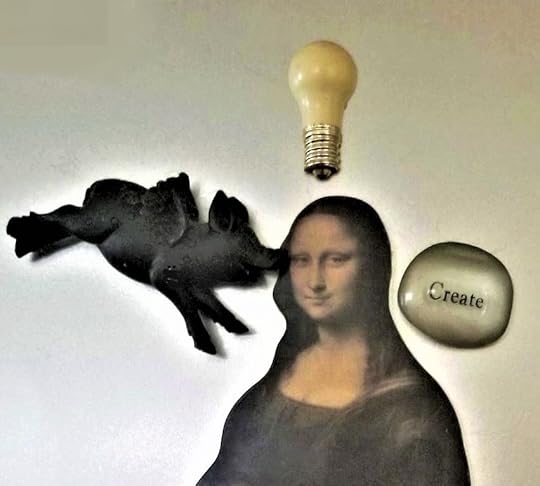 one of the magnetic stories on the author’s fridgeI have a 3 STEP PROCESS for writing an art history/mystery. But before one can ‘step’ anywhere, the ground must be prepared.
one of the magnetic stories on the author’s fridgeI have a 3 STEP PROCESS for writing an art history/mystery. But before one can ‘step’ anywhere, the ground must be prepared.
STEP ONE – In the beginning there is
‘A CONCEIT’ (the Latin term for ‘concept’) – a ‘literary conceit’ is an often unconventional, logically complex, poetic or surprising metaphor whose delights are more intellectual than sensual. Nice.
Very nice!
I’m onboard
STEP TWO – GATHER 3 CRITICAL ELEMENTS:My conceit: ‘LISABETTA – A STOLEN GLANCE’, book one of the LISABETTA TRILOGY, introduces a true face hiding behind a mask of shame and a boy with a planet-sized mind who meet the disempowered ‘Mona Lisa’ on a collision course with destiny.
A lost painting or a famous artist and one of their portraits with hauntingly plaintive eyes guarding a secret worthy of deeper discovery.
Create a parallel story hook that links the dispirited spirit with living present-day characters.
Invite a muse who’s eager to play.
AN AMUSING OCCUPATIONA muse’s job function is to connect the dots between historical facts and an author’s imagination. My muse is a storyteller entity, trained to play with fictional life situations, thereby creating compelling time-slip stories of loss, love, and reincarnation.COLD DADS & HOTBLOODED TEMPERSVoila! Two Florentine woman named Lisa who live in the same neighborhood, confuse the art world in a tragic comedy of errors.
Sadly, an egoic self-centered powermonger father (a lawyer) and a bullying stepfather (a mercenary soldier and ruffian) are negative role models for Leonardo, a gentle son – an abandoned wunderkind motivated to document the entire natural world.
WHAT’S IN A NAME?GIOCONDO: the unsuspecting volatile surname of a wealthy client of the DA VINCI FAMILY LAW FIRM, that triggers a double mystery: the location of a missing portrait, and a woman’s lost identity that befuddles historians for 500 years.
GIOCONDA: the working title ‘Gioconda’ (a smiling woman), casually applied to the ‘Mona Lisa’ is misspelled with dire consequences. French translation, ‘La Gioconde’.
SER PIERO DA VINCI, who’s not above using the son he’s cruelly disowned for a favor, commissions Leonardo to paint a flattering portrait of a disgruntled client’s wife, to pacify him.
LEONARDO DA VINCI – is an artist of growing stature by 1502, capable of painting flattering portraits. Leonardo, ever seeking to reclaim his birthright, hoping to be openly acknowledged by the family clan his name reflects, accepts Ser Piero’s offer, thinking to gain favor in his father’s eyes. His plan fails, but the commission sparks a unique idea for a portrait with a secret narrative, and he paints his sister, Lisabetta, in a modified pose wearing the same dress.
LISABETTA BUTI – Leonardo’s young stepsister has a secret name even she doesn’t know.
VERONICA LYONS – an unwed 21st century mother whose name, translated from the Latin ‘Veritas Icona’, means ‘a true face’, meets the ‘Mona Lisa’ whose true face is stolen by fate to be lost forever.
SCENE: Enter Caterina – an unmarried mother, her illegitimate son Leonardo; Lisabetta, Leonardo’s half-sister (???), and a married self-centered lawyer, Piero da Vinci.
Stir in the wife of a disgruntled client – one Monna (‘Mrs.’) Lisa Giocondo and a wishing pig.
A SCANDALOUS ROMANCESimmer over a vanity fire, fast forward 500 years to 2008, and serve with a depressed present-day unwed mother and her autistic son, and the story pitch becomes:
The pitch inspires the tagline: FATE IS MORE MYSTERIOUS THAN A SMILEThe LISABETTA TRILOGY:A troubled unwed mother hiding her ‘true face’ behind a mask of shame, and a sweet boy with a planet-sized mind visit the Louvre, and meet the spirit of ‘Mona Lisa’, trapped in her famous portrait, suffering from an identity crisis.
ONE STORY… TWO LIFETIMES…
THREE BOOKS!
https://www.amazon.com/dp/B07K6SBB78



